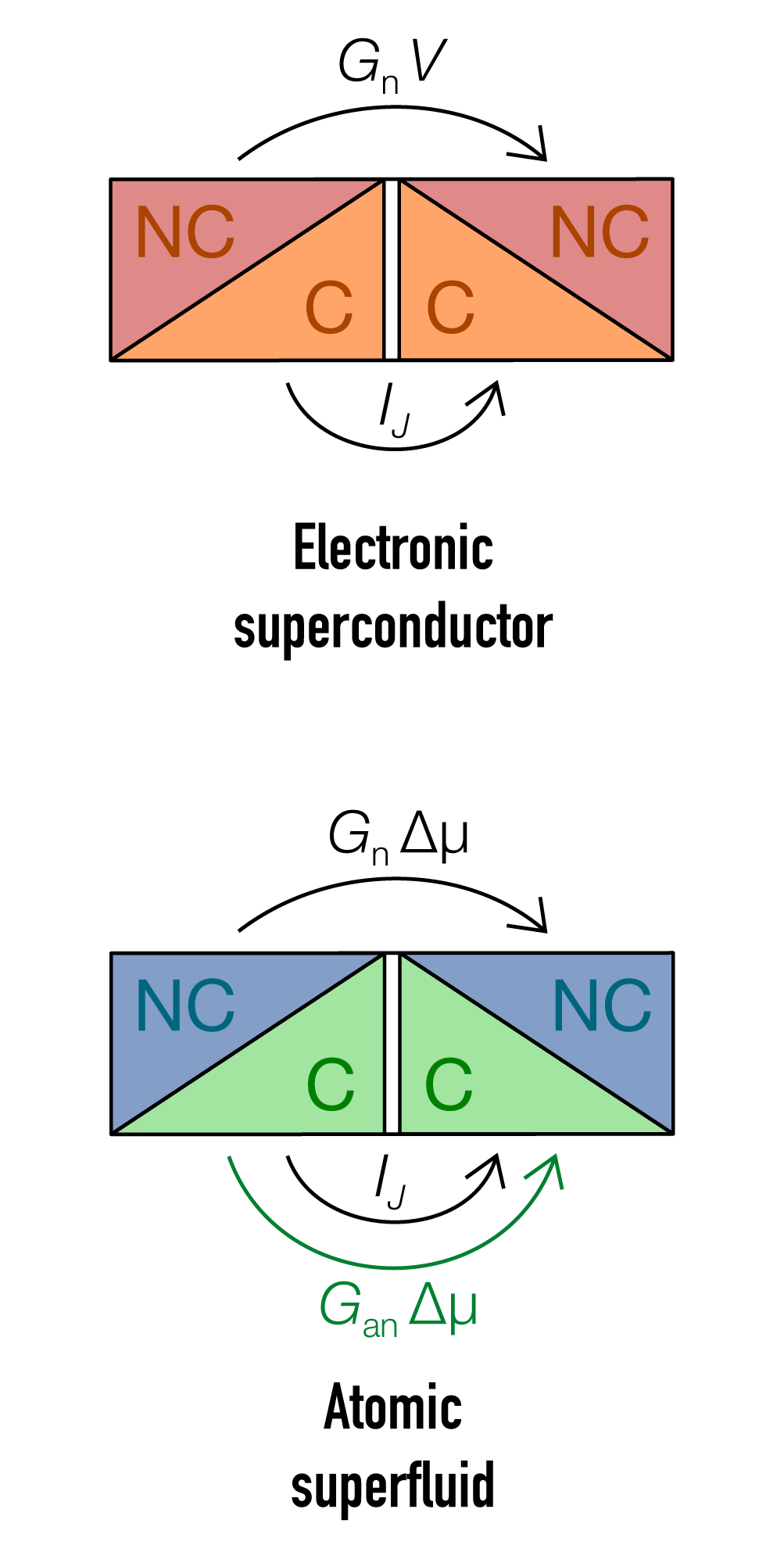|
By investigating the tunneling transport of ultracold atomic Fermi gases, we reveal for the first time a peculiar enhancement of the conductance of neutral superfluids, in contrast with charged superconductors. — Both superfluids and superconductors owe their distinctive frictionless flow to their condensed nature, namely the macroscopic occupation of a single quantum state. Regardless of the electric charge of the constituent particles, condensation results in the emergence of the Josephson effect: a tunneling current flows when two superfluid reservoirs are coupled with one another through a thin insulating barrier in a so-called Josephson junction.
Exactly as their superconducting counterparts, fermionic superfluids composed of ultracold atoms can support the flow of a dissipationless current through the junction up to a maximum value. This maximum Josephson current is directly connected to the condensate density, as we demonstrated in a previous study in the low-temperature limit, and extended in this work to finite temperatures across the superfluid transition.
For higher currents instead, the junction behaves resistively, giving rise to a finite Ohmic conductance, which we find to massively exceed the value observed in charged electronic junctions. Such large anomalous conductance, fostered by the condensate coupling with sound wave excitations, is tightly linked to charge neutrality boosting particle transport through the junction. This behavior is indeed absent in electronic junctions, where Coulomb interactions inhibit sound waves and the conductance is essentially given by the tunneling of non-condensed particles.
G. Del Pace et al.
Tunneling Transport of Unitary Fermions across the Superfluid Transition
Phys. Rev. Lett. 126, 055301 (2021)
|
